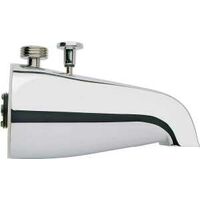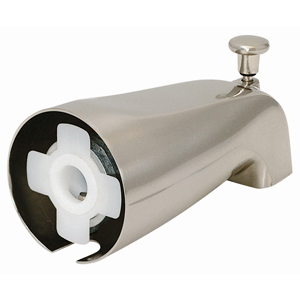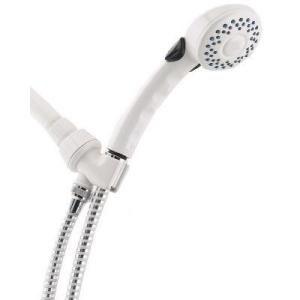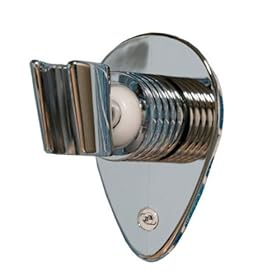Joannie:
If you really want to do this, then I'll give you some ideas on what I would do to make your bathroom as shower proof as possible:
1. Move your cabinets out of there so no water sprays on them.
2. Measure your window frame (outside to outside and top to an inch below the bottom of the wood sill. Buy a piece of thin plexiglass (1/8 inch should be fine, but 1/4 inch would be stronger). Fasten a piece of beveled wood to the top of the plexiglass. It should be as thick as the window frame sticks out from the painted wall surface PLUS twice the thickness of this kind of self adhesive magnetic strip:
The wood strip should be fastened to the INSIDE surface of the top of the plexiglass, and it should be beveled on top so that water that lands on it drips down the front of it rather than goes behind it. Paint that wood strip with an ALKYD paint first so that the silicone caulk you put between the wood and the plexiglass will stick to the wood strip.
Now, also put those self adhesive magnetic strips down the outside of both wood window frames so that you install that plexiglass by hanging it on top of the window frame and allowing it to swing downward so that the magnetic strips on the sides hold it securely in place.
The 1 inch extra length on the bottom of the plexiglass is to ensure that any water dripping off the plexiglass doesn't get into the wall at the grout joint below the window.
3. Look up "Adhesives" in your yellow pages and find out who sells a water proof tape, preferably a waterproof transparent tape. I would then repair any damage from moving the cabinet, prime the walls with an INTERIOR alkyd primer and paint over your walls with a paint meant for bathrooms like Zinsser's PermaWhite Bathroom paint OR use sizing on your painted walls and install vinyl coated wallpaper over the existing painted walls.
Now:
a) Bathroom paints have mildewcides in them that are highly water soluble, and that causes those mildewcides to migrate toward the wet, damp or humid side of the paint film. With water splashing on the paint, the mildewcides in your bathroom paint will be depleted relatively quickly, and you'll need to repaint relatively often to keep mildew from growing on your paint.
b) If you go the wallpaper route, put a strip of water proof tape straddling each joint in the wallpaper strips to keep the wall paper from loosening up at the edges.
In both cases, caulk the joint between the bathroom paint or wallpaper and the top edge of the tiles.
4. Cut a clear plastic bag along it's edges to make two plastic "flaps". Tape the top and one side of each "flap" over the soap dish so that the flaps overlap, but you can reach in between the flaps to retrieve the soap (if you decide to use bar soap).
5. Either take the towel rods out and caulk the screw hole you'll find under each end bracket, or caulk along the top half and both sides of each end bracket. Leave the bottom open so that any water that does get in can drain out. If there's a plastic or fiber anchor in the screw holes, drill those out with a 3/16 or 1/4 inch drill bit, and hopefully you won't damage any tiles.
PS: The tiling in your bathroom is made by a Canadian company called "Maple Leaf". If you go to any place that sells ceramic tiles, just ask for 4 1/4 inch square Maple Leaf tiles, and you should be able to order them in that same colour.
6. Caulk around the top of the Moen Escutcheon plate around your single lever Moen faucet handle. Ditto for the new diverter tub spout you eventually put in. In both cases, leave the bottom open so that any water that does get in can drip out.
7. And, finally, if it wuz me, I'd use either Dow Corning 786 or GE 1700 silicone caulk to install a pair of "Splash Enders":
Or a pair of Spraymaids at the front and back of your tub:
to keep water off your bathroom floor. You just stick these up with the silicone caulk. I've never installed a Spraymaid, but I have Splash Enders in all of the apartments in my building except my own. I've tried several different kinds of bathtub splash guards, and Splash Enders are the only ones that seem to stay in place. Some of these kinds of products are made from plastic that silicone just doesn't stick to, so no sooner you put them in, you find that they're falling out. Splash enders stay firmly in place when you use one of the good quality silicone caulks mentioned above.
















